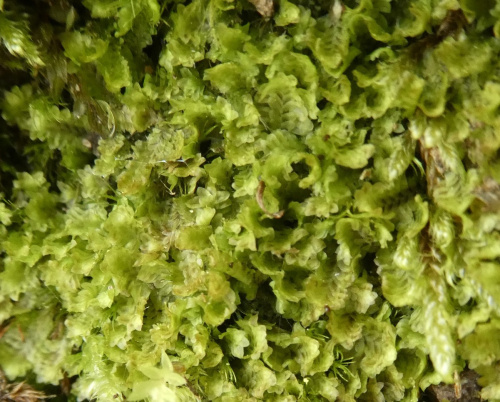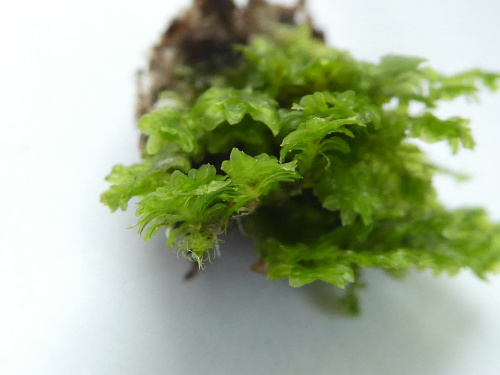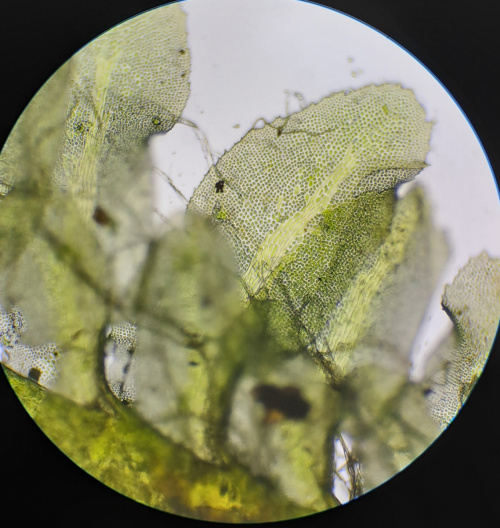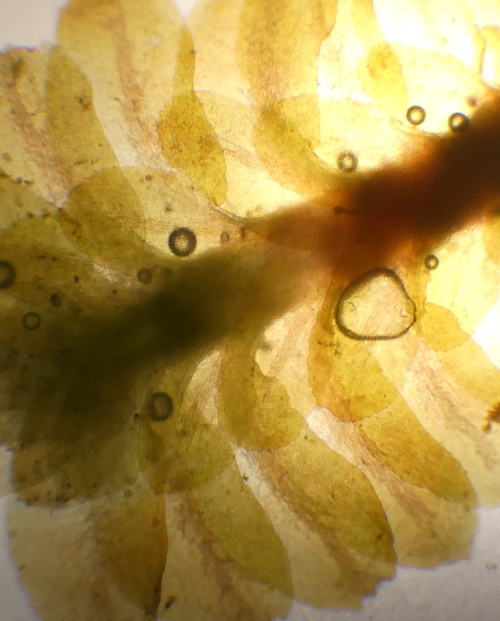White Earwort - Diplophyllum albicans
This species can be highly variable in appearance but can always be identified by its long, round tipped leaf lobes with a clearly visible line of colourless cells in the centre of each lobe. The plants lie flat when moist, but dry leaves curl up and in over the stem to give a strikingly different appearance. The plant is usually brown, but sometimes red or green in deep shade. Shoots may be up to 3.5 mm wide, and reach several centimetres in length. The leaves are up to 0.8 mm wide and 1.8 mm long. Clusters of green gemmae regularly form on the tips of leaf lobes. Male plants, perianths and capsules are fairly frequent, despite the species being dioicous.
Prefers acidic habitats on soil, peat, rock faces, boulders, or more rarely on logs, tree stumps or the bases of living trees. It may dominate acidic rock faces such as sandstone or shale in woodland, and is just as common in block scree, on open cliffs or on exposed soil by forestry tracks.
All year.
Common.
Uncommon. Known from Charnwood.
Leicestershire & Rutland Map
Enter a town or village to see local records
MAP KEY:
Yellow squares = NBN records (all known data)
Coloured circles = NatureSpot records: 2020+ | 2015-2019 | pre-2015
UK Map
Species profile
- Common names
- White Earwort
- Species group:
- Mosses & Liverworts
- Kingdom:
- Plantae
- Order:
- Jungermanniales
- Family:
- Scapaniaceae
- Records on NatureSpot:
- 3
- First record:
- 27/01/2008 (Woodward, Steve)
- Last record:
- 12/02/2024 (Bell, Melinda)
Total records by month
% of records within its species group
10km squares with records
The latest images and records displayed below include those awaiting verification checks so we cannot guarantee that every identification is correct. Once accepted, the record displays a green tick.
In the Latest Records section, click on the header to sort A-Z, and again to sort Z-A. Use the header boxes to filter the list.











